
views
Take it easy.

Stop doing whatever caused the pain and relax a bit for a few days. That tingly irritation you feel is a sign that the sciatic nerve isn’t happy with how you’re moving. Stopping the behavior that triggers the pain is the first step to treating sciatica. Continue to take it easy and don’t engage in whatever activity injured your back or leg until the irritation goes away. If lifting weights causes pain, skip the gym for the next few days. If sitting for too long made your leg pain flare-up, watch your nightly TV by standing up or lying down. It’s different from person to person, but for acute sciatica, your symptoms will typically get better after 4-6 weeks. With chronic sciatica, your symptoms should subside but they may come back in the future. If you have chronic sciatica, you may need to make some fundamental lifestyle changes to avoid whatever behaviors cause the pain. If your acute sciatica goes away after the injury heals, it’s probably okay to go back to that activity in the future.
Move around.
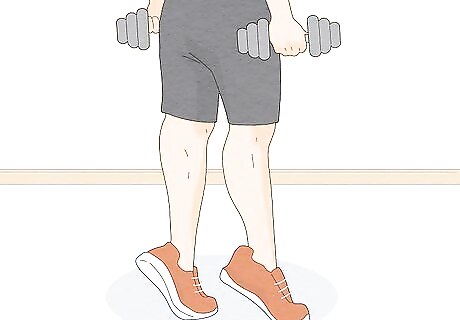
After the initial pain goes away, get your body moving again. You don’t want to take it too easy with sciatica. Once the initial inflammation and irritation goes away, engage in some low-impact physical activity. Go for a long walk, do some calf raises, and just generally stay active during the day. Just don’t overdo it by pushing your body too far. You want the blood to flow, but don’t want to go so hard you end up dripping in sweat. It’s okay to spend the night watching a movie or something; just try to stand up periodically, walk around your living room, and move around a bit while you’re relaxing. A standing desk is a great idea if you have chronic sciatica. Being able to change your position is a huge part of preventing future injuries, and if you sit for long periods of time, standing up periodically should dramatically help.
Ice the pain away.

For the first 7 days, use ice packs to soothe the inflammation. Grab a cold compress or bag of frozen veggies and wrap it in a cloth. Hold it against the area on your back or leg where the pain is most centrally located for 15-20 minutes. Then, take a 15- to 20-minute break. Repeat the process for 1-2 hours. This will numb the pain and combat the inflammation around your nerve. If the sciatic pain runs up and down your leg or back and you don’t really have one spot where the pain is uniquely intense, use multiple ice packs along the entire area. Sciatic pain is usually triggered by muscle inflammation. As the muscle gets bigger, it pushes against the sciatic nerve. As the nerve gets more irritated, it triggers more inflammation in your muscles. As a result, attacking the inflammation directly is a great way to start your recovery time.
Use a heating pad.
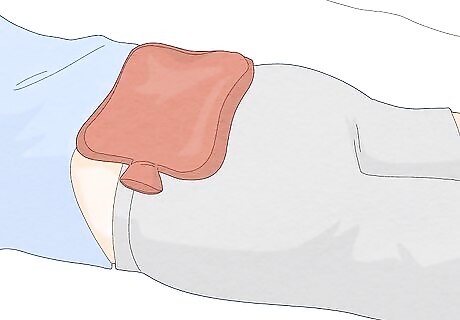
After 7 days, use a heating pad to relieve tension around the nerve. Heat will increase the blood flow to the muscles, which should speed up your healing if it’s been at least a week since the sciatic pain first flared up. Grab a heating pad and lay it over the portion of your leg or back where the sciatic pain is the most intense. Leave the pad in place for at least 15 minutes, but no longer than 2 hours. Soaking in a warm tub should also bring some relief if you want to relax while you treat the pain. Using ice for 7 days should soothe any inflammation. Once the swelling is down, the heat will help encourage blood flow to the area, which will relax muscles around your nerve. Do not sleep with a heating pad. You may burn or irritate your skin, and you could potentially start a fire.
Take an OTC medication.

Ibuprofen and naproxen are the ideal pain relievers for sciatica. They’re anti-inflammatory medications, so they’ll reduce muscle swelling around your nerves. Read the instructions on the bottle to determine how many pills to take and how often you can take them. This is an especially good option if you’ve got to head off to work or school where you know you may unintentionally trigger your sciatic pain. Either of these medications should work, but don’t combine them. If you try one and it doesn’t really help, try the other one the next day. Acetaminophen and aspirin are less likely to help curb sciatic pain. They don’t specifically target inflammation, which is the main source of pain for most people with sciatica. While these medications may help take the edge off, they’re best used as a supplement to your at-home treatment. They shouldn’t be the only thing you’re doing to keep the pain at bay.
Adjust your sleeping position.
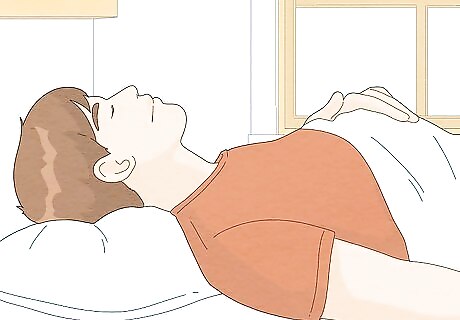
Break out an extra pillow to support the nerve while you sleep. Get a firm pillow and lay it underneath your knees when you sleep to prop them up at a slight angle. If you’re a side sleeper, bend your knees a bit and slide the pillow in between your legs to keep your knees separated. You should wake up feeling much better than you otherwise would if you didn’t have the extra support. You can use two pillows if it’s more comfortable. Keeping your knees bent will give your sciatic nerve some extra breathing room, which will keep your muscles from pinching or pushing against the nerve.
Go to physical therapy.
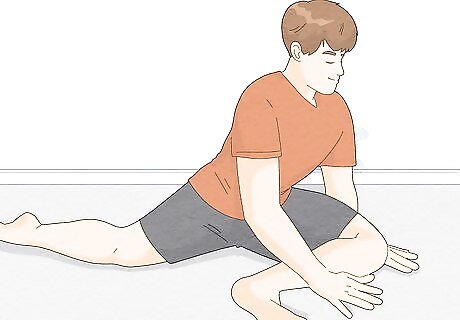
You may need to get a referral from a doctor, but PT will really help. A physical therapist will show you how to exercise, change your posture, and stretch in an optimal way to treat your sciatica. While you may not get immediate relief, strengthening the muscles around the sciatic nerve should dramatically help with chronic pain. The specific exercises you’ll need to do to relieve the pain is going to differ from person to person, since any part of the sciatic nerve can trigger sciatica. This is worth doing even if you only go for a few weeks. Once the physical therapist helps you build a rehabilitation program, you’ll be able to complete it at home without their assistance. If you have acute sciatica, you treat it at home, and it never comes back, you probably don’t need to pursue physical therapy.
Consider prescription medication.

See a doctor to determine if prescription medication may help. For chronic sciatica, ask your doctor about medication. There are a lot of different options out there, and each medication class helps with a different component of sciatic pain. Discuss your options with your doctor to see if medication may be right for you. Your doctor may suggest: Steroids: These are the most popular option, although they don’t appear to be a good long-term solution. Tricyclic antidepressants: It sounds odd, but some antidepressants block the same receptors in your brain that interpret nerve pain, which makes them a solid choice for pain management. Muscle relaxers: These medications help with muscle pain while soothing any inflammation you’re experiencing. They’re also good for muscle spasms. Anti-seizure medications: These medications will help remove any numbness, tingling, and intense pain.
Get a steroid injection.
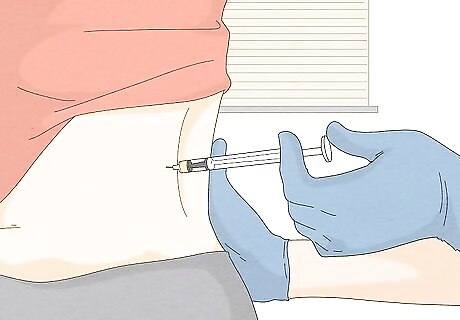
For relief that will last 3-12 months, talk to a doctor about injections. With a steroid injection, a doctor will inject a high dose of corticosteroids directly into the area where the nerve is most irritated. The relief won’t last forever, but most people are pain-free for at least a few months after the injection. These shots are mainly used for back-related issues with sciatica, but you can get them in your knee as well. A steroid injection carries risks like any invasive procedure, but this is a very safe treatment option in the vast majority of cases. If your pain is bad enough that it’s interfering with your daily life, it’s definitely worth exploring injections. The pain relief won’t last forever, but you can always get another shot in the future. Some people with chronic sciatica get a shot once or twice a year.
Stretch with extreme caution.
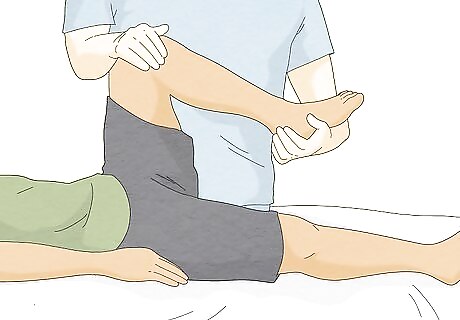
Ask a doctor or physical therapist to show you stretches that may help. The ideal stretches for you are going to depend on which part of your sciatic nerve is irritated and how the injury occurred, so check with a medical professional first before you start stretching it out. In general, it’s usually safe to carefully stretch your back and hamstrings, which may bring you some relief. Try these stretches out: Hamstrings: Lie on your back with one knee bent. Wrap a towel around your other foot and raise that leg up straight. Pull gently and raise your leg as high as you can until you feel it your hamstring. Hold for 30 seconds or so and switch legs. Back: Lie flat on your back and pull one knee to your chest slowly. Hold it for 15-30 seconds and then switch knees. Finish by holding both knees to your chest for 15-30 seconds. Hips and core: The cat and cow pose is great for this. Get on all fours, flex your core, and stick your back up for 15 seconds or so. Then, lower your core as far as you can and hold that for 15 seconds. Do this 2-3 times. Stretching your legs is one of the main ways that sciatica is diagnosed because it will often trigger sciatic pain. Be careful, and stop immediately if a given stretch causes you pain.
Talk to your doctor about surgery.
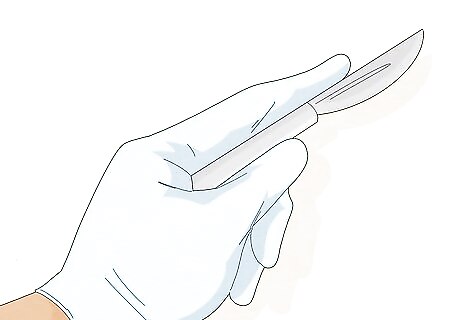
Talk to your doctor about solving the underlying problem with surgery. For many people, sciatica is an unfortunate side effect of a spinal problem—typically a herniated or bulging disk that pinches the nerve where it runs down the spine. Surgery is often a permanent solution to this, but it does involve a serious procedure. Weigh the pros and cons with your doctor to determine if surgery is right for you. While a herniated or bulging disk may be the most common cause of sciatica, it can also be caused by a cyst or tumor on your spine, stenosis, bone spurs, or degeneration of the spine due to injury or age. The risks for sciatic surgery can be fairly high, and doctors are unlikely to approve sciatic surgery if you haven’t gone to physical therapy or tried other treatments first. Try not to get frustrated. It can be hard living with sciatic pain, but surgery may be unnecessary.




















Comments
0 comment